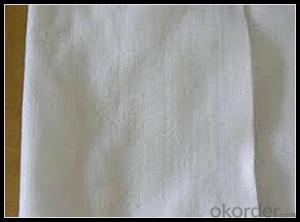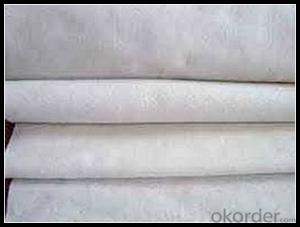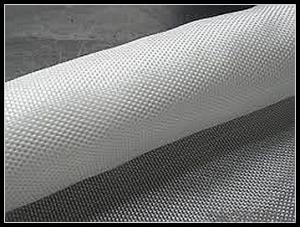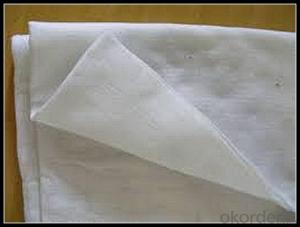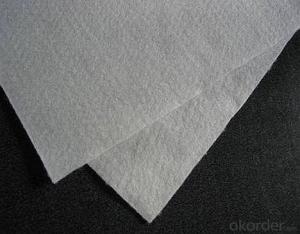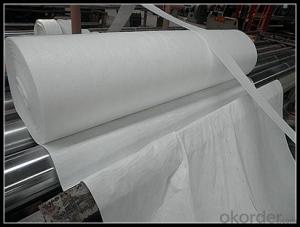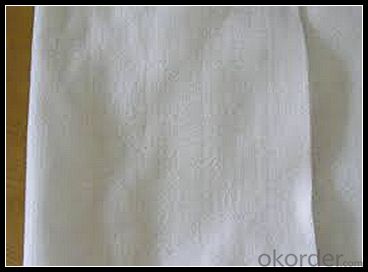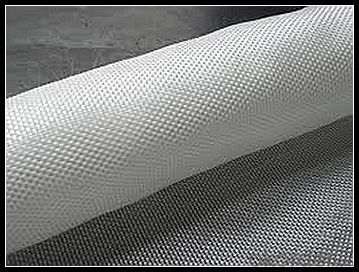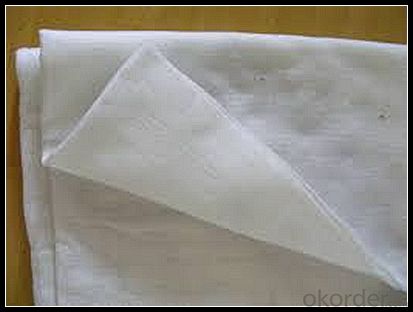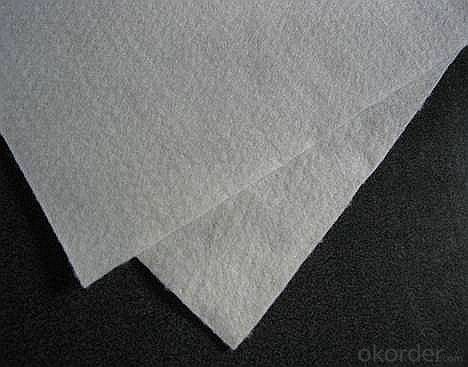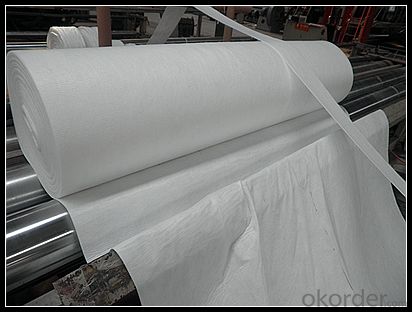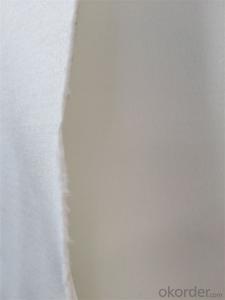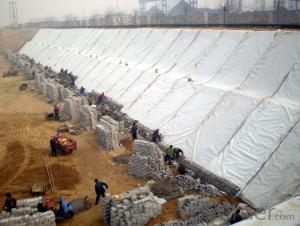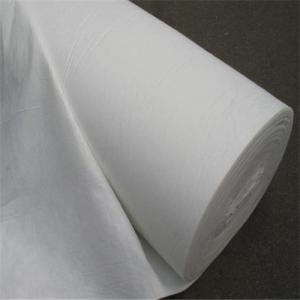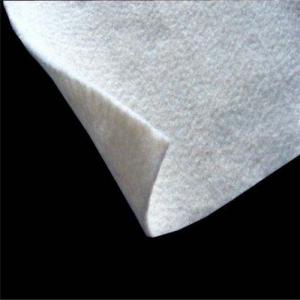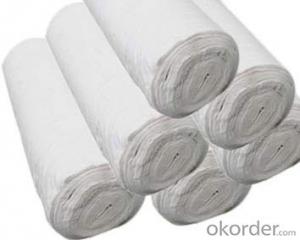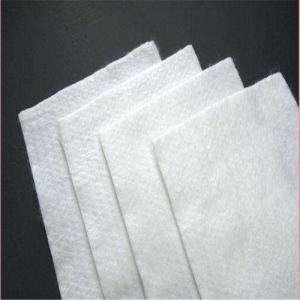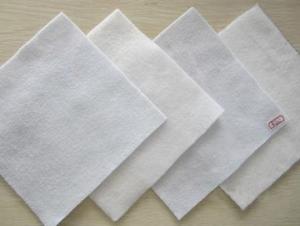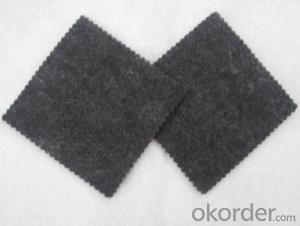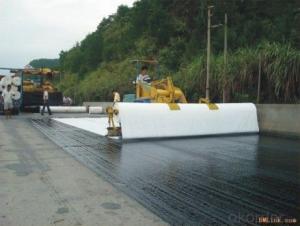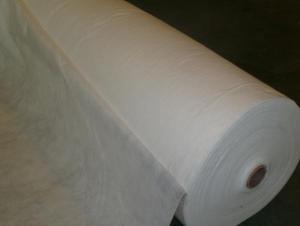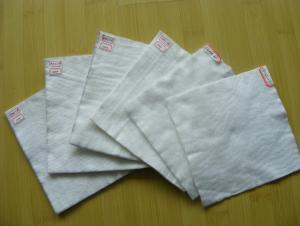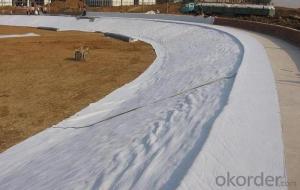Geotextile Impermeable Polypropylene Nonwoven for Road Construction
- Loading Port:
- China main port
- Payment Terms:
- TT OR LC
- Min Order Qty:
- 1000 m²
- Supply Capability:
- 1000000 m²/month
OKorder Service Pledge
OKorder Financial Service
You Might Also Like
Specification
Product Introduction
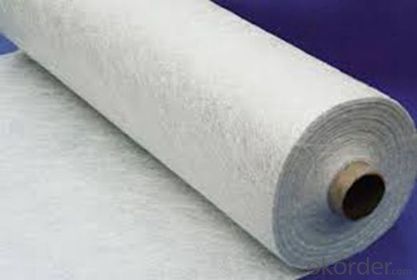
Protection
Due to excellent static puncture resistance, CNBM Geotextiles protect waterproof membranes and other sealing materials from puncture when fill material and loads are applied. When placed between sealing materials and other layers, CNBM Geotextiles and resists and distributes local pressure from the layer above, ensuring that the protected material is not stressed to failure.
Function
The main function of these geotextiles is to offer separation, filtration and primarily protection,
Separation and stabilization in road and railway construction
Prevention of soil movement in erosion control measures
Cushioning and protection in many containment projects.
geotextile fabric
permeability,filtration,easy for construction
ISO and CE certificate
Good quality and competitive price
Our Service
Quality assurance
1.On a regular basis or as per your request,we entrust national testing agencies to conduct quality inspections
2. Strictly in accordance with the ISO9001-2008 international quality system standard,we monitor and manage the whole process throughout production,quality testing,and measurement to ensure product quality
3. For quality-related construction delay or substandard construction(except for damage or losses due to customer’s responsibility or irresistible natural disasters),we have refunding,replacement,and repair services.We will respond to customers’ feedbacks on quality issues within 24 hours.
Packaging & Shipping
Packing: PLASTIC FILM INSIDE, AND WOVEN BAG OUTSIDE
Shipping: About 15 days after receipt the deposit
FAQ:
Q: What kind of payments does jenor support?
A: T/T, L/C, Cash are accepted.
Q: Do you charge for the samples?
A: Accordeing to our company policy, the samples are free, we only charge the freight fee. And we will return the freight fee during the next order.
Q: Can you produce according to customers' design?
A: Sure, we are professional manufacturer, OEM and ODM are both welcome.
Q: Do you have other products?
A: Yes, please check the pictures:
- Q: Would like to know the product of the market
- According to geotextile specifications to offer. Ranging from $ 1-9.60.
- Q: What are the regulations for geotextiles in construction projects?
- The regulations for geotextiles in construction projects vary depending on the country and region. However, in general, geotextiles must meet certain standards and specifications to ensure their effectiveness and safety. These regulations typically include requirements for strength, durability, permeability, and compatibility with the specific construction application. Additionally, geotextiles may need to comply with environmental regulations, such as restrictions on harmful substances or disposal methods. It is essential to consult local building codes, industry standards, and relevant authorities to determine the specific regulations applicable to geotextiles in a construction project.
- Q: What are the applications of geotextiles in geotechnical engineering?
- Geotextiles have various applications in geotechnical engineering, including soil stabilization, erosion control, drainage systems, and reinforcement of weak soils. They are commonly used in road construction, retaining walls, embankments, and landfills to improve the overall performance and durability of the structures. Geotextiles can also be used as a separation barrier between different soil layers or as a filter to prevent the migration of fine particles while allowing water to pass through. Overall, geotextiles play a crucial role in enhancing the geotechnical properties of soil and providing sustainable solutions to engineering challenges.
- Q: 300g / m2 geotextile package is what it means
- 300g / m2 Geotextile: refers to the weight of 300g per square meter (model) 300g / m2 geotextile package: refers to the outsourcing; with 300g of geotextile to wrap something; for example: With 300g / m2 geotextile wrapped gravel. The
- Q: How are geotextiles affected by UV exposure?
- Geotextiles are affected by UV exposure due to the degradation of their fibers by sunlight. This exposure can weaken the material, reducing its overall strength and durability over time. To mitigate this, geotextiles are often treated with UV stabilizers or are installed in a manner that minimizes direct exposure to sunlight.
- Q: How do geotextiles help in preventing soil liquefaction?
- Geotextiles help in preventing soil liquefaction by providing stability and reinforcement to the soil. They act as a barrier and restrict the movement of soil particles, thereby reducing the potential for liquefaction. Additionally, geotextiles enhance the drainage capacity of the soil, allowing water to flow through and preventing the buildup of excess pore pressure, which is a major factor leading to liquefaction.
- Q: What are the specifications for geotextiles in erosion control projects?
- The specifications for geotextiles in erosion control projects typically include factors such as the material type, strength and durability, permeability, and installation requirements. It is important for geotextiles used in erosion control to be made of high-quality materials that can withstand environmental conditions and provide effective soil stabilization. The strength and durability of geotextiles should be capable of withstanding the forces exerted by flowing water and soil particles. Additionally, the permeability of geotextiles should allow for proper water drainage while preventing soil erosion. Proper installation techniques, such as overlap and anchoring, are also important specifications to ensure the geotextiles effectively control erosion.
- Q: Can geotextiles be used for reinforcement of pipeline trenches?
- Yes, geotextiles can be used for reinforcement of pipeline trenches. Geotextiles are commonly used in civil engineering projects to enhance the stability and strength of soil. In the case of pipeline trenches, geotextiles can be placed as a separation layer between the soil and the pipeline, preventing soil intrusion and providing additional support to the pipeline structure.
- Q: How do geotextiles help in reducing the risk of slope failures?
- Geotextiles help in reducing the risk of slope failures by providing reinforcement and stabilization to unstable slopes. These materials are placed within the slope to increase its strength and prevent erosion. Geotextiles also help in promoting water drainage and filtration, which reduces the build-up of hydrostatic pressure within the slope. Overall, geotextiles enhance the stability of slopes and mitigate the potential for landslides or slope failures.
- Q: Can geotextiles be used in erosion control in river channel stabilization?
- Yes, geotextiles can be used in erosion control in river channel stabilization. They are commonly used to prevent soil erosion and stabilize river banks by acting as a barrier that allows water to pass through while retaining the soil particles. Geotextiles can effectively control erosion and provide long-term stability to river channels.
Send your message to us
Geotextile Impermeable Polypropylene Nonwoven for Road Construction
- Loading Port:
- China main port
- Payment Terms:
- TT OR LC
- Min Order Qty:
- 1000 m²
- Supply Capability:
- 1000000 m²/month
OKorder Service Pledge
OKorder Financial Service
Similar products
Hot products
Hot Searches
Related keywords
